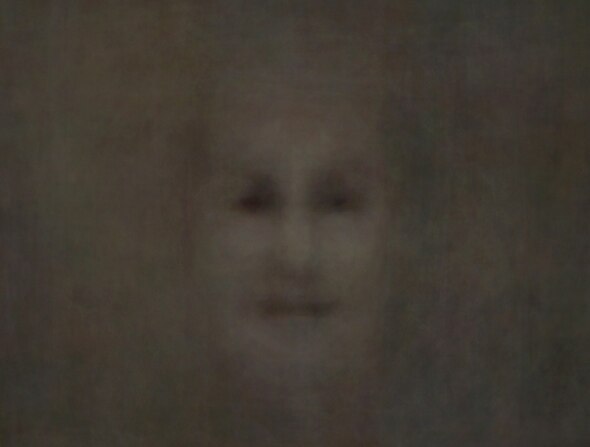Create a free profile to get unlimited access to exclusive videos, sweepstakes, and more!
The Face in the Machine

Our brains are ridiculously overdesigned machines for interpreting patterns.
Seriously, you see faces everywhere you look. Clouds, rocks, oil stains, light reflections, giant gas clouds in space … we’re hard-wired to interpret random or at least semirandom patterns as faces.
There may be an evolutionary survival advantage to this; recognizing their mother’s or father’s face is something babies do early on. But the hardware in our heads is wired so strongly for this we see faces in things that are only at best vaguely facelike. This effect is called pareidolia.
Slight tangent: Perhaps you’ve seen the results of software that can take photographs and combine them in a way to smooth out all the features, producing an “average” composition. This is an interesting experiment to perform on faces, to see what an overall median human face looks like.
Science- and math-based artist Robby Kraft was curious about that sort of thing. As a test, he used some software to create the image at the top of this post using selfies on Instagram.
Nifty, but that wasn’t his goal. What he really wanted to know was, what would it look like if you tried using that software on things that only looked like faces?
It's not that easy. The software has to be able to find and then tag features (eyes, nose, mouth), scale the images, rotate and align them, then find a way to blend colors, shading, and so on. Kraft fiddled with the software to do this, then applied it to 2,500 objects. The software was able to identify faces in only about 100 of them, but it was enough to create this image:
First off: AIIIIIIIIIEEEEEEEE!
Holy WOW is that creepy. Like something you might see shifting and melting in the patterns of plaster on your wall before fading out.
Sweet dreams.
But second, that’s amazing. No human faces were used to create that image! It was all inanimate objects, shifted and combined to create a face from nonfaces. There’s also definitely an “uncanny valley” effect going on here as well; it looks human enough to be recognizable as such, but is just enough off that it’s decidedly creepy and disturbing. Yikes.
This artificial face may actually replace this as the creepiest thing I’ve seen. And in a sense it’s all in our heads; that’s not really a face, made from not really faces. And if you find it off-putting, well, that’s all in your head too.
Huh. What’s in our heads strongly influences what we see on the fronts of other peoples’ heads. That’s not a surprise, but it’s still interesting to note how strong it is, and how hard it is to overcome our own programming. That’s a good thing to keep in mind, for many, may reasons.
Tip o’ the (clearly artificial) hat to Gizmodo.


























